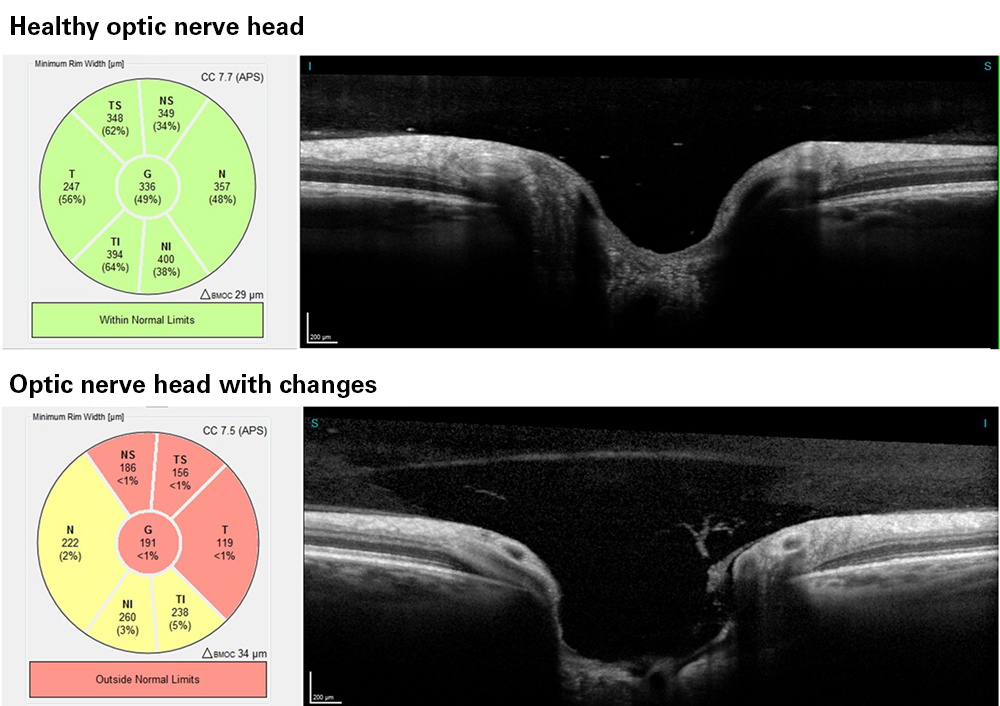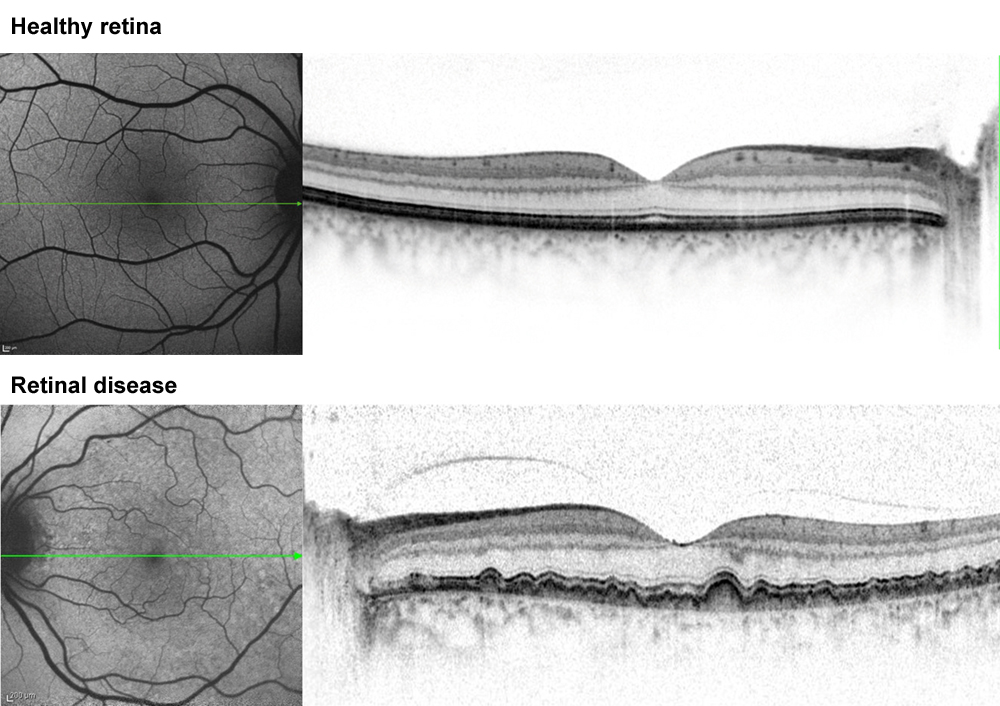Impaired vision of unknown origin
Impaired vision loss defects are noticeable defects in your vision field that can not directly be explained by medical history, or preliminary exam.
The reason for this may be due to the fact that the defects are in different areas of the eye. Areas that should be examined are e.g. the vitreous body, the retina or the optic nerve head.
If the cause of impairment is detected early and accurately, in most cases, effective therapies may improve vision.
(click to enlarge the image)
What is an OCT examination?
“OCT” is short for “optical coherence tomography” a modern imaging technique like MRI or sonogram, which shows doctors structures inside the eye that can change due to eye disease.
What are medical benefits of the OCT examination?
The OCT exam images different areas of the eye to help identify the reason behind impaired vision loss.
Particularly in cases where the pre-examination offers limited information, the OCT exam can be used to support diagnosis.
The OCT examination not only enables the physician to identify the origin of impaired vision loss, it can also help with therapy decisions.




